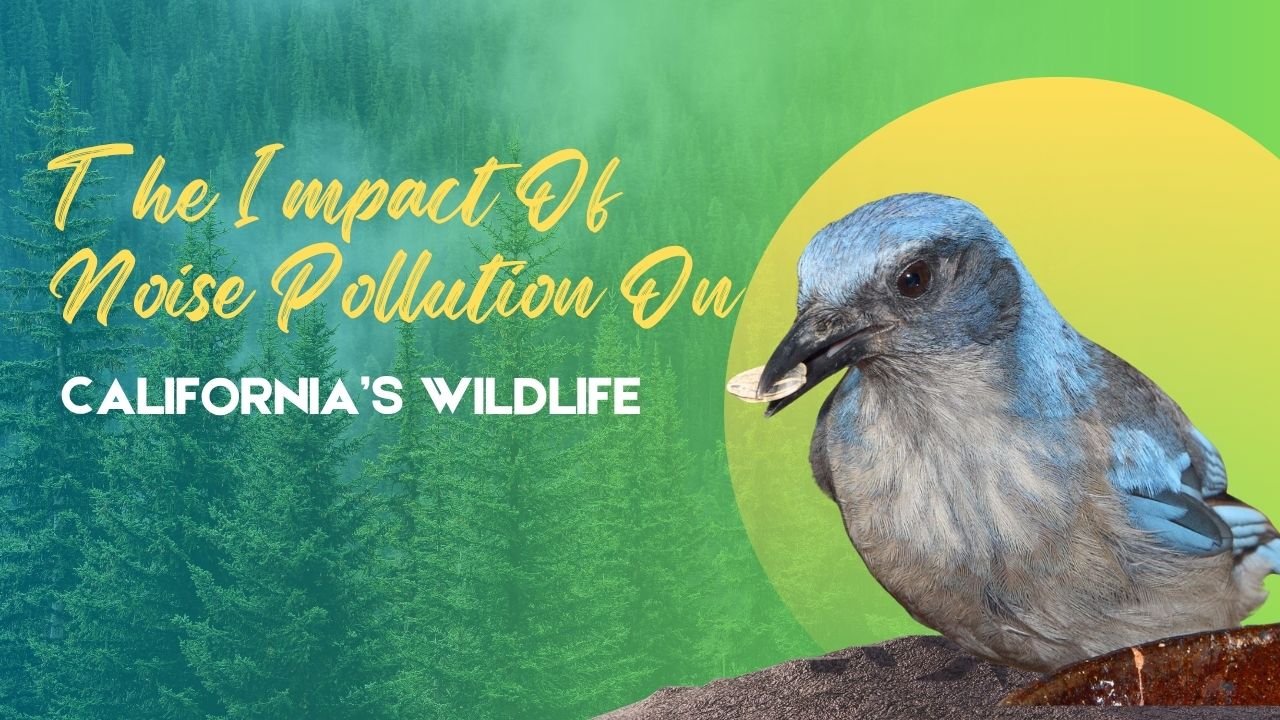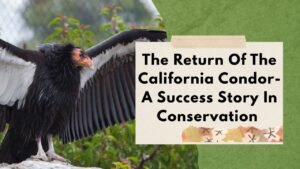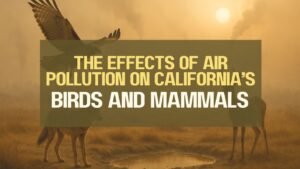In California’s diverse ecosystems — from coastal waters to forests and urban green spaces — sound plays a crucial role in wildlife survival.
But in 2025, increasing noise pollution from ships, highways, construction, aircraft, and recreational activity is creating an auditory assault on many species.
Animals depend on sound for communication, mating, foraging, navigation, and predator avoidance.
When human noise intrudes, it can mask critical signals, induce stress, and force wildlife to abandon otherwise suitable habitat.
This article explores the latest documented effects, species at highest risk, mitigation techniques being applied today, and what steps Californians can take to preserve quieter, healthier ecosystems.
How Noise Affects Wildlife: Mechanisms and Consequences
Masking and Communication Disruption
Many animals use specific frequency bands to communicate. When human noise overlaps in frequency and amplitude, it masks critical signals.
Birds may fail to hear alarm calls or courtship songs. Marine mammals relying on low-frequency communication find their calls drowned out by ship engines.
Physiological Stress and Behavior Changes
Chronic or repeated exposure to loud noise triggers elevated stress hormones, leading to decreased immune function, lower reproductive success, and higher mortality.
Sudden noises can cause startle responses, interrupt feeding, and force animals to flee important habitat.
Habitat Avoidance and Displacement
When a region becomes persistently loud, animals may avoid it entirely—even if food and shelter are abundant.
Over time, this can reduce usable habitat and fragment populations.
Indirect Effects
Noise can alter prey–predator dynamics (if prey reduce movement), interfere with parental care (if calls between adults and young get lost), and interact synergistically with other stressors like climate change, habitat loss, and pollution.
The 2025 Snapshot- What’s Happening in California
Marine Environments
- In 2024, marine scientists documented a rise in whale entanglements along the California coast, especially among humpback whales, suggesting increased overlap of shipping routes and whale migration corridors.
- During the same period, voluntary Vessel Speed Reduction (VSR) zones along key whale foraging corridors saw a measurable drop in underwater noise—estimated around a 35–40% reduction in active acoustic levels—and a roughly 50% reduction in ship-strike risk in those zones.
- Harbor seal populations in certain coastal towns have shown decline, especially in colonies near urban development. Investigations in 2025 point to repeated disturbance events (including elevated noise and human presence) as contributing stressors.
- Stranding events for various marine mammals along Southern California have remained higher than historical averages, drawing attention to the multiple stressors—including acoustic disturbance—faced by these populations.
Terrestrial and Urban Habitats
- Bird populations near major roads, freeways, and construction zones are exhibiting signs of altered singing behavior: increased pitch, shorter songs, and timing shifts to quieter periods (e.g., pre-dawn).
- Studies in forested corridors and protected areas indicate that some sensitive species reduce breeding success when located within certain decibel thresholds of highways or noisy infrastructure.
- Parks in urban areas have begun experimenting with “quiet hours” and traffic calming measures; anecdotal observations in 2024–2025 suggest slight rebounds in vocal activity of songbirds when noise is reduced temporarily.
- In development zones, construction projects are more often required (by local environmental review) to schedule noisy operations outside critical breeding or nesting seasons and to employ noise barriers or muffling devices.
2024–2025 Noise Impacts and Mitigation in California
| Wildlife / Setting | Noise Impact | Observed 2024–2025 Trends | Mitigation or Management Action |
|---|---|---|---|
| Whales (blue, humpback, fin) | Low-frequency masking, collision risk | Elevated entanglements, deeper communication interference | Vessel Speed Reduction in zones, routing changes, compliance incentives |
| Harbor seals (haul-outs, pupping areas) | Disturbance, flushing, reduced nursing | Colony declines near urban edges | Buffer zones, seasonal closures, restrict loud operations nearby |
| Seabirds & shorebirds | Masked calls, nest abandonment | Altered calls, fewer successful nests near noise sources | Noise-timed work schedules, enforce no-drone zones, buffer distances |
| Forest / riparian birds | Masking, territory degradation | Increased pitch, fewer mate signals near roads | Redirect traffic, install barriers/vegetation noise filters |
| Urban songbirds / greenspaces | Compressed vocal space, stress | Temporary rebound during lower traffic periods | Quiet hours, drone bans, traffic calming in green buffers |
What’s Working- Strategies That Deliver
Scaled Ship Slowdowns
As shown in recent seasons, asking large vessels to slow in sensitive marine zones can generate large acoustic payoff—and reduce strikes on whales.
Acoustic Timing and Quiet Zones
Designating quiet hours during dawn and dusk in parks, sanctuaries, and reserve margins allows wildlife to carry on communication during critical windows.
Smart Construction Scheduling
Mandating that major noise-producing works avoid breeding and nesting seasons, and using quieter technologies (vibratory vs impact, mufflers, noise walls), reduces disruption.
Buffer Zones and Physical Barriers
Distance buffers (shorelines, haul-outs) and natural / artificial noise barriers around highways and development help shield wildlife from invasive sound.
Community Engagement and Planning
Education initiatives help people understand wildlife sensitivity. Zoning, ordinances, and local policy can embed noise considerations into habitat planning.
Outlook and Challenges
Implementing noise reduction consistently across jurisdictions remains a hurdle. Monitoring acoustic compliance requires technology (sound meters, AIS tracking of ships) and enforcement.
Funding for retrofits or redesigns of infrastructure can be costly. Some species’ thresholds remain poorly characterized—the level at which noise becomes harmful varies.
And climate change and habitat loss continue to press wildlife, meaning noise is often one stress among many.
However, the progress in recent years shows that noise pollution is not insurmountable. California’s mix of coastal, urban, and natural settings provides “laboratories” for solutions. Every decibel saved restores more room for life.
As of 2025, noise pollution is increasingly recognized as a front-line conservation threat in California.
From whales in offshore corridors to seals in coastal haul-outs and birds in forest edges and city parks, species are responding to the auditory clutter we’ve inserted into their lives.
But the picture is not bleak: targeted strategies like ship slowdowns, timing controls in construction, buffer zones, and noise-aware planning are already achieving measurable reductions in harmful sound exposure.
The challenge now is scaling those efforts, enforcing compliance, and integrating sound into every decision about habitat design, transportation, and development.
If Californians rise to the challenge, the payoff will be re-opened acoustic space for wildlife—and a truly richer, more biodiverse future.
FAQs
Which California animals suffer most from human noise today?
Whales (particularly baleen whales) are among the most affected due to overlap with shipping noise. On land, harbor seals at coastal sites, nesting seabirds, and forest songbirds near roads and construction zones are majorly impacted.
Can slowing ships actually help wildlife?
Yes. In recent seasons, voluntary speed reductions by large ships in sensitive zones yielded substantial drops in underwater noise and fewer risky ship-whale interactions.
What actions can cities and residents take?
Support quiet hours in parks, enforce drone bans near sensitive areas, request noise-sensitive scheduling for local construction, and advocate for sound buffers along roads and trails.



